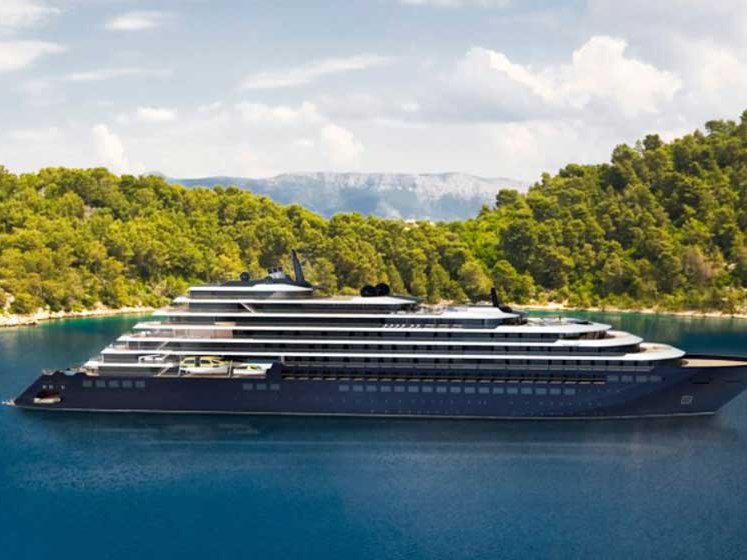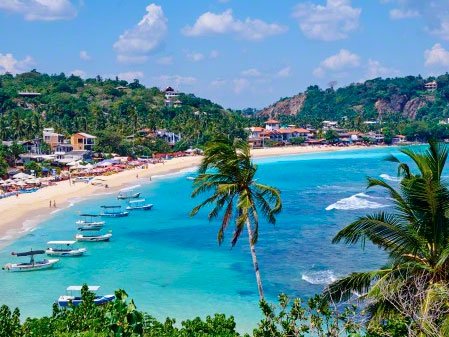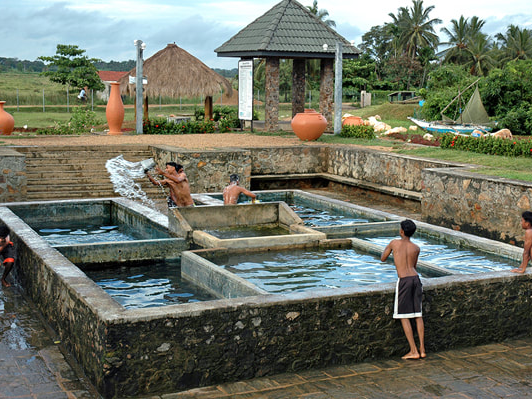GCC ‘Floating Palace’ Partnerships: Attracting Middle Eastern Superyachts to Sri Lanka as a Maritime Service Hub

Introduction: The Untapped Potential of Sri Lanka’s Maritime Luxury Market
Sri Lanka, long celebrated as the “Pearl of the Indian Ocean,” is globally known for its tea, spices, culture, and biodiversity. However, in today’s dynamic tourism economy, the island’s coastal belt and strategic location at the heart of major shipping lanes offer a vastly underexplored opportunity: becoming a regional hub for luxury maritime services catering to Gulf Cooperation Council (GCC) superyachts.
Superyachts—floating palaces that symbolize wealth and exclusivity—are increasingly common in the Middle East. According to Knight Frank’s 2024 Wealth Report, the Middle East now accounts for 12% of the global ultra-high-net-worth population (UHNWIs), with over 22,700 individuals possessing wealth above USD 30 million. The UAE and Saudi Arabia, in particular, are fueling rapid growth in luxury yachting, as billionaires and royals seek both private leisure and status-driven marine lifestyles.
Despite this boom, most GCC yachts remain serviced in Europe (Monaco, Spain, Italy) or Singapore. Sri Lanka—located just 1,400 nautical miles from Dubai, 2,200 from Jeddah, and positioned on the main East-West maritime artery—could reposition itself as the “service pit-stop” for GCC luxury yachts, combining technical repair, refueling, crew rotation, and luxury tourism experiences.
This article explores the strategic pathways, case studies, and economic potential for Sri Lanka to attract these floating palaces from the Gulf.
The Global Superyacht Landscape: Data and Trends
- Global fleet size: As of 2024, there are approximately 5,900 superyachts (over 30m) worldwide, with 150–200 new deliveries annually (SuperYacht Times, 2023).
- Middle Eastern ownership: Around 12% of superyachts globally are owned by GCC-based clients, many linked to royal families and sovereign investors.
- Average spend per yacht: Each superyacht contributes USD 1.5–2 million annually to servicing, crew management, and luxury expenditures.
- Tourism spillover: Studies show that when superyachts dock at regional hubs, the multiplier effect on local economies can exceed 3x the direct marine revenue, as crews, owners, and guests consume local hospitality, aviation, and retail services.
Why Sri Lanka? Strategic Advantages
- Geographical Location: Positioned on the main East-West maritime highway, ideal for vessels moving between Europe, the Gulf, and Asia-Pacific.
- Port Infrastructure: Colombo and Hambantota ports already handle transshipment cargo, with expansion potential for luxury yacht berthing and dry docking.
- Service Economy: With skilled labor in engineering, hospitality, and medical care, Sri Lanka can offer competitively priced services compared to Europe or Singapore.
- Tourism Diversification: Tapping into high-value luxury segments aligns with Sri Lanka Tourism Development Authority’s 2025 strategy of moving “beyond mass tourism.”
- Cultural Compatibility: Shared religious, historical, and trade ties with the Middle East make Sri Lanka a “familiar yet exotic” destination for GCC elites.
Case Studies: Lessons from Global & Regional Peers
- Dubai Harbour, UAE: Now the largest marina in the Middle East (1,100 berths), it demonstrates how integrated luxury developments can attract and retain superyachts. Dubai shows that visionary investment can transform a desert coast into a marine luxury capital.
- Jeddah Yacht Club, Saudi Arabia: Opened in 2021 to align with Vision 2030, it is not just a marina but a status symbol. Hosting events like the Saudi F1 Grand Prix ensures yachts become part of broader lifestyle ecosystems.
- Maldives Yacht Service Model: With limited infrastructure, Maldives has capitalized by offering exclusive marine experiences—diving, island hopping, and private anchorage. Sri Lanka can complement Maldives by offering service and repair facilities while Maldives provides leisure anchorage.
- Singapore’s Keppel Marina: A global repair and refueling hub, serving yachts moving between Australia, Asia, and Europe. Singapore demonstrates that a small island can dominate through efficiency, safety, and legal reliability.
- Seychelles Superyacht Tourism: Although smaller in scale, Seychelles attracts GCC yachts by positioning itself as a high-value eco-destination. Sri Lanka can learn from its conservation-led marine marketing.
- Barcelona, Spain (MB92 Shipyard): Europe’s largest yacht repair facility, where technical excellence generates billions annually. Sri Lanka’s Hambantota could replicate this model at a lower operational cost.
- Turkey’s Bodrum & Antalya Yacht Industry: Turkey became a leading superyacht refit hub by combining craftsmanship, affordable pricing, and strategic marketing. Sri Lanka could position itself similarly for the Indian Ocean.
Economic Potential for Sri Lanka
- Direct Services: Yacht repair, dry docking, refueling, crew training.
- Tourism Integration: High-net-worth tourists bring opportunities for private aviation, five-star villas, cultural tourism.
- Job Creation: Marine engineering, hospitality, logistics—estimated 10,000+ direct and indirect jobs in five years.
- Revenue Forecast: If Sri Lanka attracts even 1% of the GCC yacht servicing market, it could generate USD 150–200 million annually.
Key Enablers for Success
- Policy Framework: Simplified visa systems for yacht crews and fast-track customs for luxury vessels.
- Infrastructure: Dedicated superyacht berths at Colombo Port City and Hambantota.
- Marketing Alliances: Partner with GCC-based yacht clubs, luxury lifestyle expos, and sovereign wealth funds.
- Sustainability: Develop eco-certified marina services to appeal to conservation-minded elites.
- Public-Private Partnerships (PPP): Incentivize global yacht service brands to set up in Sri Lanka.
Risks & Mitigation
- Geopolitical Risks: Must maintain non-alignment and neutrality to reassure international yacht owners.
- Environmental Concerns: Strict marine conservation and waste management policies essential.
- Reputational Risks: Sri Lanka must ensure luxury service delivery matches GCC expectations.
Conclusion: From Pearl to Palace
Sri Lanka stands at a crossroads. Beyond beaches and tea estates lies a chance to reinvent itself as a premium maritime service hub—a strategic niche few South Asian nations are exploring. By leveraging its proximity to the Gulf, maritime infrastructure, and hospitality expertise, Sri Lanka could transform from a transit point into a destination for the world’s floating palaces.
As the GCC luxury class expands and looks eastward, Sri Lanka has one opportunity: to ride the wave of superyacht growth, or to remain a silent spectator. With bold vision, partnerships, and sustainable planning, the island can claim its place in the global maritime luxury map.
Disclaimer
This article has been authored and published in good faith by Dr. Dharshana Weerakoon, DBA (USA), based on publicly available data from cited national and international sources (e.g., Sri Lanka Tourism Development Authority, Central Bank of Sri Lanka, international tourism monitors, conservation bodies), decades of professional experience across multiple continents, and ongoing industry insight. It is intended solely for educational, journalistic, and public awareness purposes to stimulate discussion on sustainable tourism models. The author accepts no responsibility for any misinterpretation, adaptation, or misuse of the content. Views expressed are entirely personal and analytical, and do not constitute legal, financial, or investment advice. This article and the proposed model are designed to comply fully with Sri Lankan law, including the Intellectual Property Act No. 52 of 1979 (regarding artisan rights and design ownership), the ICCPR Act No. 56 of 2007 (ensuring non-discrimination and dignity), and relevant data privacy and ethical standards.
✍ Authored independently and organically through lived professional expertise—not AI-generated.
Further Reading: https://www.linkedin.com/newsletters/7046073343568977920/






